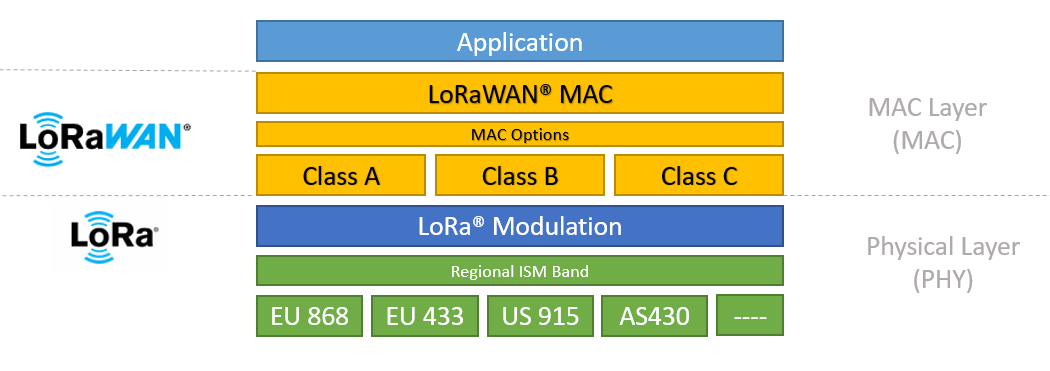LoRa and LoRaWAN: Key Technologies Enabling Long-Range IoT Communications
LoRa and LoRaWAN are key technologies that enable a vast network of devices to communicate over long distances using minimal power. They are crucial in the Internet of Things (IoT), where devices such as water meters, air quality sensors, parking meters, and other sensors transmit small volumes of non-time-critical data. This article explores how LoRa and LoRaWAN facilitate these communications, highlights their differences, and showcases their broad applications across various IoT scenarios.
What is LoRa in IoT Networks?
LoRa, which stands for Long Range, is a wireless communication technology renowned for its ability to transmit data over long distances with minimal power consumption. It uses a proprietary Chirp Spread Spectrum (CSS) modulation technique, ensuring reliable communication across diverse environmental conditions. This unique modulation scheme enhances communication reliability against interference and multipath fading and supports long-range capabilities, allowing data to be transmitted over several kilometers.
Operating on unlicensed Industrial, Scientific, and Medical (ISM) bands—such as 868 MHz in Europe, 915 MHz in North America, and 2.4 GHz globally—LoRa facilitates the creation of low-power wide-area networks (LPWANs). These networks are perfectly suited for expansive geographic areas with minimal infrastructure, designed for devices that require long battery life in remote locations. LoRa excels in applications that demand the transmission of small data packets at very low bit rates, providing a range significantly greater than conventional short-range technologies like Wi-Fi, Bluetooth, or ZigBee.
What is LoRaWAN?
LoRaWAN (Long Range Wide Area Network) is a scalable network server protocol for IoT applications built on top of LoRa modulation, designed to wirelessly connect low-powered devices to the internet over large areas. It is specified and overseen by the LoRa Alliance, an open, non-profit association that aims to establish the LoRaWAN protocol as the leading open global standard for IoT LPWAN. This commitment is underscored by its official recognition as a standard for LPWAN by the International Telecommunication Union (ITU).
LoRaWAN operates using a star-of-stars network topology, where gateways function as transparent bridges. These gateways relay messages between end-devices and a central network server (LNS), converting RF packets to IP packets and back again, using standard IP connections.
This structure maximizes the long-range communication strengths of the LoRa physical layer, enabling a direct link from each end-device to one or multiple gateways. This efficient setup ensures broad area coverage with minimal power usage.
Security is a top priority in large-scale IoT deployments, and LoRaWAN ensures robust protection through advanced cryptographic techniques:
- Network Session Key (NwkSKey): This unique 128-bit key safeguards the network layer by authenticating and maintaining the integrity of the data packets transmitted between end-devices and the network server.
- Application Session Key (AppSKey): Another distinct 128-bit key that secures communication at the application level, providing end-to-end encryption to keep payload data private from the network operator.
LoRaWAN uses AES encryption algorithms to strengthen these security layers, making it possible to build multi-tenant networks where the network operator cannot see the user payload data. These keys can be set up in advance through Activation By Personalization (ABP) or assigned dynamically via Over-The-Air Activation (OTAA).
LoRaWAN supports three classes of devices to accommodate various application needs:
- Class A: These devices have the lowest power consumption and initiate communication in an asynchronous manner, allowing for the transmission of uplink messages at any scheduled time, followed by two downlink windows, RX1 and RX2.
- Class B: Adds scheduled receive windows for downlink messages in addition to Class A’s receive slots, which reduces downlink latency at the cost of slightly higher power consumption.
- Class C: Devices’ receivers are always on except when transmitting, providing the lowest downlink latency suitable for applications where power is not a constraint.
LoRaWAN supports variable data rate settings, which balance communication range and message duration. These rates range from 0.3 kbps to 50 kbps and are managed through an Adaptive Data Rate (ADR) scheme to optimize both battery life and network capacity. Communication packets also utilize frequency hopping and spreading factors, which effectively create virtual channels that enhance the network’s capacity. The orthogonality of these spreading factors ensures that signals do not interfere with each other, maintaining clear and efficient transmission across the network.
LoRaWAN has been adopted internationally for smart cities, agriculture, and industrial IoT applications. Its specifications continually evolve to include advanced features such as roaming, firmware updates over the air (FUOTA), and network extenders (relays), building a reliable and mature ecosystem for IoT connectivity.

Differences and Applications of LoRa and LoRaWAN
In summary, LoRa operates at the physical layer, providing the essential radio modulation needed for long-range communication. In contrast, LoRaWAN functions at the network layer, where it handles the management of communication protocols and ensures secure data transmission across the network. While LoRa is well-suited for simple point-to-point communications, LoRaWAN is designed for more complex network architectures that require efficient device management and scalability.
Both LoRa and LoRaWAN offer a wide range of IoT use cases for secure and scalable networks applications but are particularly valuable in sectors like agriculture, urban development, and industrial IoT. For instance, agricultural sensors utilize LoRa to transmit data across long distances to a central server. Through LoRaWAN, these devices are not just connected but also efficiently managed, facilitating precise and timely data collection and enhancing resource management. In smart cities, LoRaWAN is instrumental in managing networks of devices for monitoring traffic, public utilities, and environmental conditions, contributing to more efficient and smarter urban living.